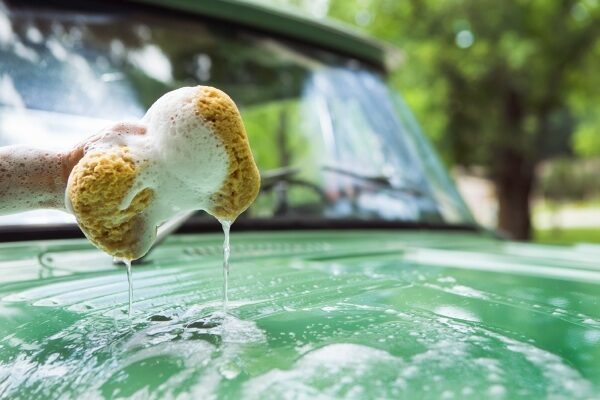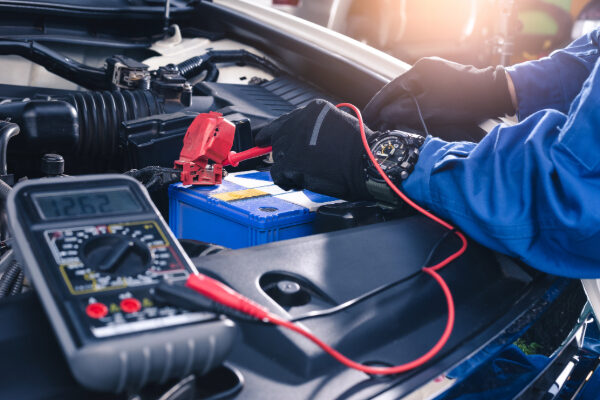
Do you want to make your car shine inside and out? Well, you need more than “elbow grease.” Ciro Papi, owner of CP Car Detailing in Blooming Grove, N.Y., says you also need to have to have the right tools.
Get started on the inside with these supplies:
Interior car cleaning
Keeping your interior clean can make your rides all the more enjoyable. Some tips to keep the seats, floors, and windows spotless are using:
Foam sponge
Papi recommends using a foam sponge to apply an all-purpose interior cleaning product onto the inside panels, as well as little foam paint brushes for cleaning the interior vent. “You may also want to use a simple paint brush to really agitate the edges and crevices,” Papi says.
Interior protectant
Once done cleaning the inside, you should follow with an interior protectant. “An interior cleaner is going to clean the dirt off the surfaces, an interior protectant is going to protect those panels from damage from the sun,” he says.
Apply a small amount of protectant to the dashboard and steering wheel and rub it in thoroughly. Be careful not to use a dressing that makes the dashboard shiny or the wheel slippery, though—both are safety hazards.
Soft bristle brush and upholstery cleaner
Papi also recommends using a soft bristle brush combined with an upholstery cleaner to loosen hard-to-reach buildup on either the fabric or the leather material. “If it’s too stiff, this could result in uplifting fibers and actually causing damage,” he warns.
Vacuum
To remove stains from upholstery or carpets, use a vacuum to get the surface dirt off, then apply a foam-based product that, after a moment or two, you wipe off. Papi recommends purchasing a vacuum that has good suction but also pumps air out. “Then, after you wash your car, you can use that to blow off the water on your paint and crevices,” he says.
To extend the time between deep cleanings of your car’s interior, consider flipping your floor mats upside down if they have plastic backing—or buying a plastic set of mats—especially if you live in an area with rough winters.
Once you’ve completed the interior, move to the outside of your vehicle.
Cleaning car exterior
Once you’ve mastered your car’s insides, you’ll want to move onto keeping your car’s exterior:
Two buckets and car wash soap
For exterior cleaning, you need a couple of buckets for what Papi calls the “two-bucket method.” One is filled with plain water and the other with water and car wash soap.
Car wash mitt
You also need a car wash mitt with long fuzzy fingers to trap the dirt. This is much better than a sponge, he stresses. When sponges grab the dirt, they have nowhere to hide it, he says, adding that dirty sponges can end up scratching and swirling the paint.
Start by taking the mitt, placing it in the rinse bucket and then dipping it into the other with the suds. Then clean off the front bumper. “Once you’re done with that, you put your wash mitt back into the bucket with just water and rinse it off,” he says. Papi recommends you use a mesh grid guard to prevent your mitt from going to the bottom of the bucket where the dirt settles.
Ideally, you want to wash the car from the top to the bottom, leaving the trunk for last. That’s going to be the dirtiest part of the vehicle because of the swirling dust vortex that forms behind the car, Papi explains.
Absorbent waffle weave microfiber towels
You don’t want to allow water to sit for too long on the surface without drying, because this can result in hard-water spots, he warns. So if your car is partially shaded, you may start on that side, first going top to bottom. Doing the sunny side next will minimize water spots. Once you’re done with washing, he recommends using three or four absorbent waffle weave microfiber towels for drying.
Clay bar
Then you can remove any embedded dirt with a clay bar, which usually comes in a kit with a quick detailing solution, Papi notes. Follow the instructions that come with the kit. Some people like to rinse or wash their car after using a clay bar.
Dual-action polishing machine
Next comes polishing. He recommends a dual-action polishing machine for this. Such a machine not only does a full circle but it also jiggles left to right, helping to prevent heat buildup. If you’re not careful, that could happen with a rotary buffer, burning through your paint, he explains. Again, follow the directions that are supplied with a polishing machine if you are doing it yourself.
Microfiber towel and car wax
Once you polish the entire car and remove the polish residue with a regular microfiber towel, you then apply your choice of wax, in many cases using the same dual-action machine. “You could use a spray wax where it looks like water and you wipe it right off easily, or you could use a paste wax, which is kind of traditional,” Papi says.
Rather than using paste wax, which tends to last just few months, you can use a longer-lasting liquid sealant, which you can apply with the machine.
Silica-based glass product
Finally, for maximum paint protection, a silica-based, glass product can be applied to your paint. “You could put these coatings on your finish, and it’s almost like a second layer of clear-coat,” he said, adding that this will last up to three years.
The whole process is designed to protect your paint and make washing the car easier in the future. “Your car is going to stay cleaner longer, and when you go ahead and wash the car (again), the dirt and water are going to slide right off the paint,” he concludes.
Interested in learning even more tips for your car? Explore hacks for driving, parking and more here.



